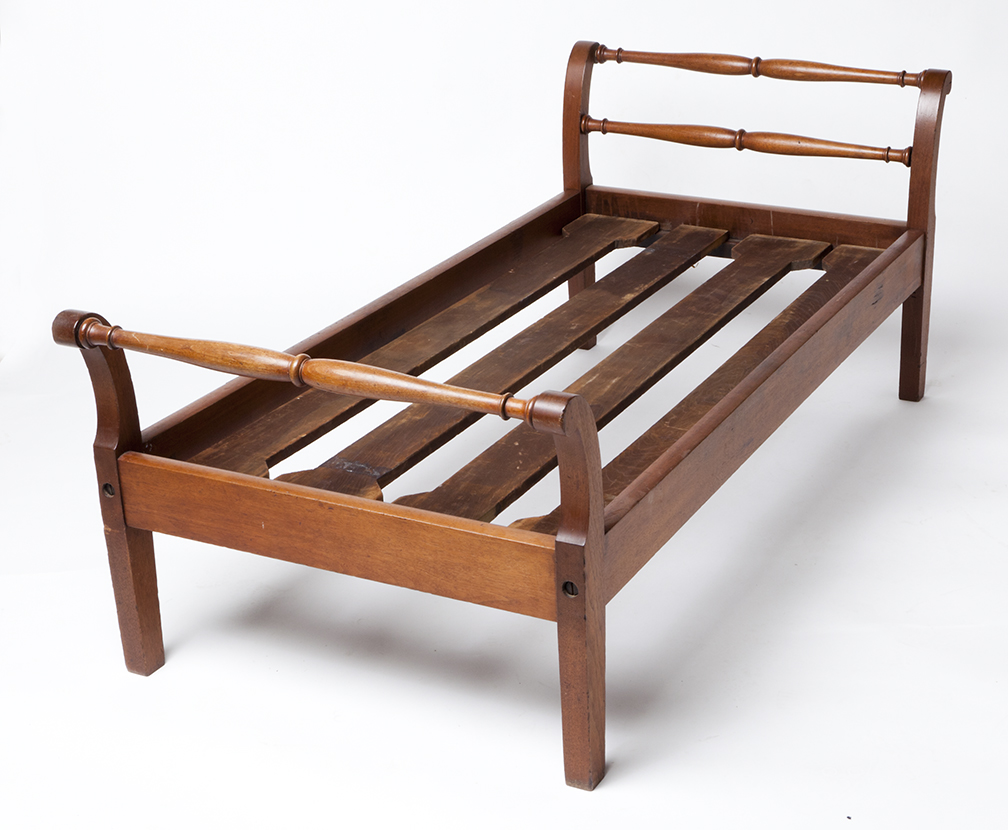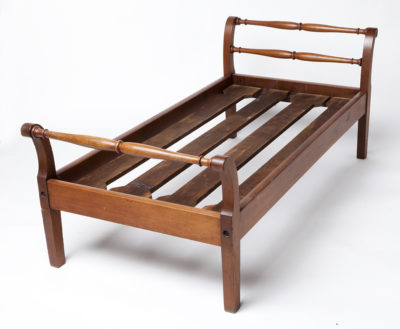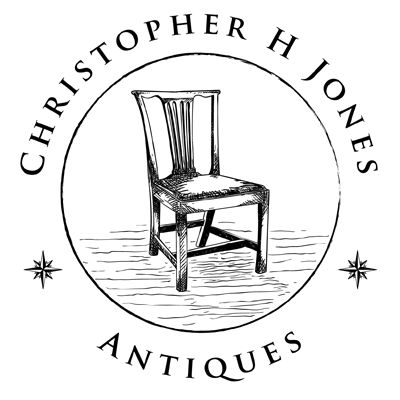Walnut Day Bed
Georgetown, District of Columbia
Shop of William King (1771-1854)
Circa 1815-1830
67 ¼” long x 32 ¼” wide x 26 ¾” tall
Commentary: It is somewhat surprising in light of his long career and high level of output that so few labeled or documented pieces of William King’s furniture have survived. King was among Georgetown’s best known and well established cabinetmakers for the first half of the nineteenth century. His career in the District of Columbia spanned nearly 60 years during which he made furniture for President James Monroe and numerous other prominent residents of the capital city. In 1818, King submitted a bill to the government for 24 chairs and 4 sofas for the refurbishing of the White House after its destruction during the War of 1812. His “Mortality Book” in which King, who also served as undertaker, recorded the coffins he crafted over his long tenure is indicative of his extensive client base and represents a fascinating record of the social and economic life of Georgetown.
Beyond the facts presented in a Magazine Antiques article on King in May 1977 by Anne Golvin, little information has emerged about his career. Born in northeastern Ireland, King immigrated to the United States with his parents at an early age, arriving in Baltimore in 1774. He is thought to have apprenticed with John Shaw of Annapolis before moving to Washington where he built his cabinet business to be among the city’s largest. Recent research suggests that the competition from more mechanized shops and from outside the immediate region had a negative impact on William King’s business – as was the case with many traditional cabinetmakers. In a news article concerning the murder of King’s son in California in 1856, the writer notes that the deceased man’s father was “William King, a cabinetmaker…well known throughout the District. Though he was in indigent circumstances, and bore himself modestly and humbly, he was most highly esteemed, and was often called upon to preside over meetings, both in Georgetown and in this city. Everybody bowed to and obeyed his decisions.”
This day bed has a long, continuous history in the Offley Family of Georgetown and by family tradition “was made by a Georgetown, D.C. furniture maker by the name of King.” David Offley (1781-1838), United States Consul to Smyrna, may have lived in Georgetown and was certainly in Washington on several occasions and is likely the first owner of the daybed. His son, John Holmes Offley (1802-1845) was born in Brooke Court House, Virginia and educated in Philadelphia. He traveled with his father to Smyrna in 1815, returned to the United States in 1835 and settled in Georgetown in 1838 where he pursued a career in the War Department. The open, turned rail style of the head and foot boards as well as the Klismos inspired vertical posts suggest that the day bed dates to the period 1815 – 1830 suggesting that it could have been purchased by either man.
Holmes E. Offley (1839-1919), son of John Holmes Offley, was Chief Clerk of the Navy Department from 1868-1874 and resided at 49 Second Street in Georgetown (now 3314 O Street). He subsequently established a banking firm with his brother which specialized in “collection of claims against the government.” The day bed descended from the estate of H.E. Offley to Col. E. M. Offley (1879-1970) and thence to his grandson J.B. Offley of Williamsburg, Va. from whom it was acquired in 2004.
Condition: The bed survives in fine condition with its original slat boards. The secondary wood is tulip poplar.
Price:sold
References:
Offley Family Provenance – Notes by J.B. Offley, Williamsburg, Virginia
Edgar Miller, American Antique Furniture, Vol. One, Page 601.
Anne Golvin, Magazine Antiques, William King, May 1977.
College of William and Mary, Swem Library Special Collections, Papers of John Holmes Offley



